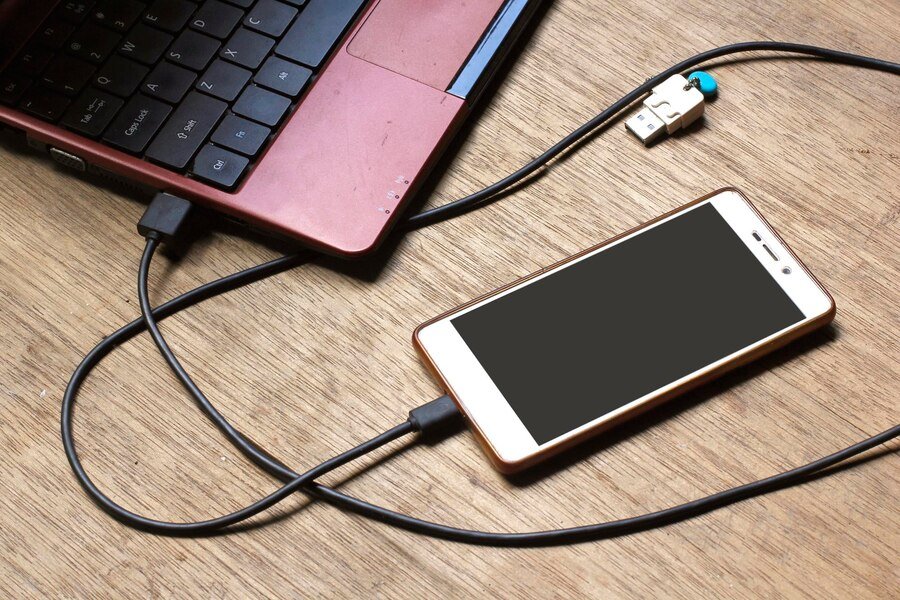In today’s digitally driven world, the convenience of charging our mobile phones from our laptop’s USB-C port has become increasingly important. However, many users have encountered the frustrating issue of their mobile phones not charging when connected to their laptops via the USB-C port. This problem can be quite perplexing, especially when we rely on our laptops for charging on the go.
In this article, we will delve into the underlying causes behind this issue and provide valuable insights into why your mobile phone may not be charging from your laptop’s USB-C port. We will explore potential technical limitations, compatibility issues, and other factors that could contribute to this charging dilemma.
Additionally, we will offer practical solutions and workarounds to help you address this issue and ensure that you can reliably charge your mobile phone using your laptop’s USB-C port. Understanding the complexities of charging compatibility is essential in today’s digital landscape, and we aim to equip you with the knowledge to overcome this common challenge.
Reasons Why the USB-C Port on Your Laptop is Not Charging Your Phone
There could be several reasons why the USB-C port on your laptop is not charging your phone. Recognizing these causes can aid in problem-solving and troubleshooting. Here are the primary reasons your mobile phone does not charge from a laptop’s USB-C port:
- Technical Limitations: Some laptops may not support sufficient power output through their USB-C ports to charge certain mobile phones. This limitation often results from the laptop’s power supply and the USB-C port’s capabilities.
- Compatibility Issues: Certain mobile phone models may not be fully compatible with the USB-C port on specific laptops, leading to issues with charging initiation and power transfer.
- Data Transfer Mode: Sometimes, when the mobile phone is connected to the laptop’s USB-C port, it defaults to data transfer mode instead of charging mode, resulting in no power being supplied to the phone.
- Insufficient Power Delivery (PD) Support: The USB-C port on the laptop may not support Power Delivery, which is essential for fast charging or charging certain high-capacity mobile phones.
- Hardware or Software Problems: In some cases, hardware or software-related issues on either the laptop or the mobile phone can prevent successful charging via the USB-C port.
How to Troubleshoot If the USB-C Port on Your Laptop Is Not Charging Your Phone
If your mobile phone fails to charge while connected to your laptop’s USB-C port, do not worry. Following these methods should help you troubleshoot and resolve the mobile phone not charging problem.
1. Check the Connection
The first thing to do is make sure the USB-C cable is firmly attached to the ports on your laptop and phone. Sometimes, a loose connection can prevent charging. Try gently wiggling the cable and reseating it to see if there’s any improvement.
2. Update Drivers and Software
Outdated drivers or software on your laptop can sometimes lead to compatibility issues, resulting in the phone not charging from the USB-C port. Check the manufacturer’s website for the latest USB 3.0 Driver Download and Updates on your Laptop and install them accordingly. Additionally, you can also use the Windows built-in tool, Device Manager. This tool can really help you update the drivers securely and effectively.
3. Inspect the USB-C Cable
Inspect the USB-C cable for any signs of physical damage, such as exposed or ripped wires. If you notice any damage, it’s best to replace the cable with a new one to rule out potential cable-related issues.
4. Clean the USB-C Port
Over time, dust, lint, or debris can accumulate in the USB-C port, leading to poor connectivity. Use a can of compressed air or a small brush to carefully clean out the port and remove any foreign particles that may be obstructing the connection.
5. Restart Your Devices
Sometimes, a simple restart can resolve charging issues. Restart both your laptop and your phone, then attempt to charge your phone again to see if the problem persists.
6. Try a Different USB-C Port
If your laptop has many USB-C ports, try using a different port to charge your phone. This can help determine if the issue is specific to a particular port or if it’s a more widespread problem.
7. Test with Another Device
To further isolate the issue, attempt to charge a different device using the USB-C port on your laptop. If the alternate device charges without any problems, the issue may be with your phone rather than the laptop’s port.
Read Also: How Can Laptop Repair in Henderson Extend Your Device Life?
8. Reset Power Management Settings
Reset the power management settings on your laptop by navigating to the device’s power options and restoring default settings. This can help ensure that there are no conflicting power settings causing the charging issue.
Final Takeaway
By following these troubleshooting steps, you can work towards identifying and resolving the issue of your USB-C port on your laptop not charging your phone. If the issue persists after following these steps, it’s advisable to seek professional technical support to address the underlying cause.


